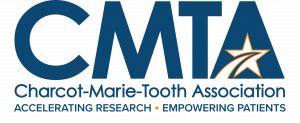CMTA Updates List of Neurotoxic Meds Potentially More Hazardous to CMT Patients
CMT is a progressive disease of the peripheral nerves that causes one in 2,500 people to lose normal use of their feet, legs, arms and hands. As the nerves die, the muscles around them follow suit. Symptoms include foot deformity (very high arched feet) and foot drop (inability to hold foot horizontal); a slapping gait (feet slap on the floor when walking); loss of muscle in the lower legs, leading to skinny calves; numbness in the feet; and difficulty with balance. In rare cases, hearing, vision and breathing may also be affected.
In 2022, the CMTA commissioned Guido Cavaletti, MD, and Paola Alberti, MD, PhD, to do a systematic review of the currently available published data in order to provide a scientific basis for the list. Cavaletti is a professor of human anatomy at the School of Medicine and Surgery, University of Milano-Bicocca, while Alberti is an assistant professor there.
The two potentially toxic drugs—the anticancer drugs vincristine and paclitaxel—are both administered only in very specific diseases by physicians who are well aware of their possible peripheral neurotoxicity and of the need for careful monitoring. That is not to say that people with CMT will not experience side effects from any other drugs included in the review, just that their risk is not greater than for people who do not have CMT.
The reviewers emphasized the importance of not denying patients with CMT treatments that may prolong life expectancy for cancer or improve their health status if affected by non-cancer-related diseases. Close and accurate monitoring of peripheral nerve function in CMT patients treated with any neurotoxic agent remains mandatory to detect the earliest signs of neuropathy worsening and any non-typical outcomes.
Members of the CMT community should ensure that all their treating physicians are aware of their disease. They should discuss the risks and benefits of any treatment for non-CMT-related conditions and the potential impact on pre-existing condition(s). The list of neurotoxic medications is not intended as medical advice, nor is it a list of drugs that individuals with CMT should avoid. Rather, it is intended to help patients and their healthcare providers make informed medication decisions.
Neurologists monitoring CMT patients as part of their normal care package or for natural history studies should keep detailed records of exposures to potentially neurotoxic medications and support reporting of accelerated neuropathy progression if observed.
Dr. Cavaletti commented, “The results of this revision provide clarification that CMT patients are not exposed to any additional risk of peripheral nerve damage when compared to people who do not have CMT, apart from the cases of vincristine and, probably, paclitaxel. This message is definitely reassuring, although it does not mean that surveillance on possible drug-induced side-effect should be reduced. As in all medical practices, the risk-to-benefit ratio should always be considered in drug prescription: however, there should not be excessive (and unmotivated) concern in treating CMT patients, provided the correct treatment is proposed.”
A manuscript based on the report has been accepted for publication in the Journal of the Peripheral Nervous System. It is available to view online ahead of print publication at http://doi.org/10.1111/jns.12566.
The CMTA is the leading patient advocacy organization driving CMT research. Its mission is to develop treatments and a cure for the 3 million people worldwide who live with the disease, while improving the quality of life for patients and their families. The CMTA has invested $23.5 million in the search for a cure and its Strategy to Accelerate Research (STAR) brings world-renowned CMT researchers together with pharmaceutical and biotechnology partners and patients to accelerate scientific breakthroughs. The CMTA also offers community services, including 70 local branches, educational materials and patient conferences.
Marcia Semmes
Charcot-Marie-Tooth Association
+1 4436311859
marcia@cmtausa.org
Visit us on social media:
Facebook
Twitter
LinkedIn
Instagram
Legal Disclaimer:
EIN Presswire provides this news content "as is" without warranty of any kind. We do not accept any responsibility or liability for the accuracy, content, images, videos, licenses, completeness, legality, or reliability of the information contained in this article. If you have any complaints or copyright issues related to this article, kindly contact the author above.

